Filter by
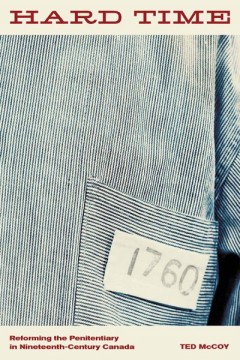
Hard Time Reforming the Penitentiary in Nineteenth-Century Canada
Tracing the rise and evolution of Canadian penitentiaries in the nineteenth century, Hard Time examines the concepts of criminality and rehabilitation, the role of labour in penal regimes, and the problem of violence. Linking the lives of prisoners to the political economy and to movements for social change, McCoy depicts a history of oppression in which prisoners paid dearly for the reciprocal…
- Edition
- -
- ISBN/ISSN
- 978-1-926836-96-6
- Collation
- -
- Series Title
- -
- Call Number
- -

Teaching And Learning Methods In Medicine
This book considers the evolution of medical education over the centuries, presents various theories and principles of learning (pedagogical and andragogical) and discusses different forms of medical curriculum and the strategies employed to develop them, citing examples from medical schools in developed and developing nations. Instructional methodologies and tools for assessment and evaluation…
- Edition
- -
- ISBN/ISSN
- 978-3-319-06850-3
- Collation
- XVIII, 334
- Series Title
- -
- Call Number
- -

Evolutionary Foundations of Economic Science How Can Scientists Study Evolvi…
This book aims to discern and distinguish the essential features of basic economic theories and compare them with new theories that have arisen in recent years. The book focuses on seminal economic ideas and theories developed mainly in the 1930s to 1950s because their emergence eventually led to new branches of economics. The book describes an alternative analytical framework spreading through…
- Edition
- -
- ISBN/ISSN
- 978-4-431-54844-7
- Collation
- 78 b/w illustrations, 24 illustrations in colour
- Series Title
- -
- Call Number
- -

Economic History of Warfare and State Formation
This edited volume represents the latest research on intersections of war, state formation, and political economy, i.e., how conflicts have affected short- and long-run development of economies and the formation (or destruction) of states and their political economies. The contributors come from different fields of social and human sciencies, all featuring an interdisciplinary approach to the s…
- Edition
- 1
- ISBN/ISSN
- 978-981-10-1604-2
- Collation
- -
- Series Title
- -
- Call Number
- XXII, 283

Economic History of Warfare and State Formation
This edited volume represents the latest research on intersections of war, state formation, and political economy, i.e., how conflicts have affected short- and long-run development of economies and the formation (or destruction) of states and their political economies. The contributors come from different fields of social and human sciencies, all featuring an interdisciplinary approach to the s…
- Edition
- 1
- ISBN/ISSN
- 978-981-10-1604-2
- Collation
- -
- Series Title
- -
- Call Number
- XXII, 283
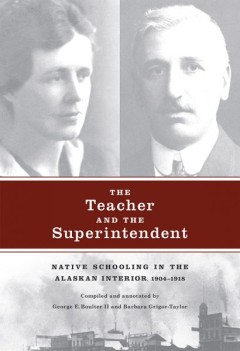
The Teacher and the Superintendent Native Schooling in the Alaskan Interior,…
From 1906 to 1918, Green kept a personal journal—hitherto in private possession—in which she reflected on her professional duties and her domestic life in Alaska. Collected in The Teacher and the Superintendent are Boulter’s letters and Green’s diary. Together, their vivid, first- hand impressions bespeak the earnest but paternalistic beliefs of those who lived and worked in immensely i…
- Edition
- -
- ISBN/ISSN
- 9781927356500.01
- Collation
- -
- Series Title
- -
- Call Number
- -
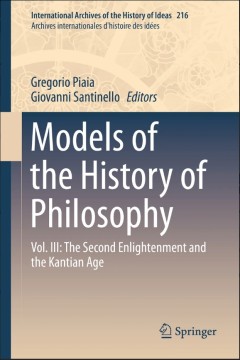
Models of the History of Philosophy:Vol. III: The Second Enlightenment and th…
This is the third volume of Models of the History of Philosophy, a collaborative work on the history of the history of philosophy dating from the Renaissance to the end of the nineteenth century. The volume covers a decisive period in the history of modern thought, from Voltaire and the great “Encyclopédie” of Diderot and d'Alembert to the age of Kant, i.e. from the histoire de l'esprit hu…
- Edition
- 1
- ISBN/ISSN
- 978-94-017-9965-2
- Collation
- XXXII, 1000
- Series Title
- International Archives of the History of Ideas Archives internationales d'histoire des idées
- Call Number
- -
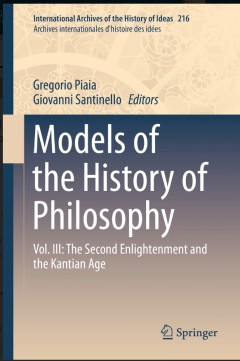
Models of the History of Philosophy:Vol. III: The Second Enlightenment and th…
This is the third volume of Models of the History of Philosophy, a collaborative work on the history of the history of philosophy dating from the Renaissance to the end of the nineteenth century. The volume covers a decisive period in the history of modern thought, from Voltaire and the great “Encyclopédie” of Diderot and d'Alembert to the age of Kant, i.e. from the histoire de l'esprit hu…
- Edition
- 1
- ISBN/ISSN
- 978-94-017-9965-2
- Collation
- XXXII, 1000
- Series Title
- International Archives of the History of Ideas Archives internationales d'histoire des idées
- Call Number
- -

Modern Logic 1850-1950, East and West
This book presents diverse topics in mathematical logic such as proof theory, meta-mathematics, and applications of logic to mathematical structures. The collection spans the first 100 years of modern logic and is dedicated to the memory of Irving Anellis, founder of the journal 'Modern Logic', whose academic work was essential in promoting the algebraic tradition of logic, as represented by Ch…
- Edition
- 1
- ISBN/ISSN
- 978-3-319-24754-0
- Collation
- XIII, 258
- Series Title
- Studies in Universal Logic
- Call Number
- -
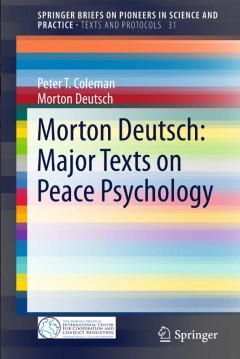
Morton Deutsch: Major Texts on Peace Psychology
Commemorating Morton Deutsch’s 95th birthday, this book presents ten major texts by this highly respected social psychologist on war and peace. This second volume presents Deutsch in his role as a leading social science activist on issues of war and peace – writing papers, making speeches and participating in demonstrations. After serving in the U.S. Air Force during World War II and being …
- Edition
- 1
- ISBN/ISSN
- 978-3-319-15442-8
- Collation
- XIII, 167
- Series Title
- SpringerBriefs on Pioneers in Science and Practice
- Call Number
- -
 Computer Science, Information & General Works
Computer Science, Information & General Works  Philosophy & Psychology
Philosophy & Psychology  Religion
Religion  Social Sciences
Social Sciences  Language
Language  Pure Science
Pure Science  Applied Sciences
Applied Sciences  Art & Recreation
Art & Recreation  Literature
Literature  History & Geography
History & Geography